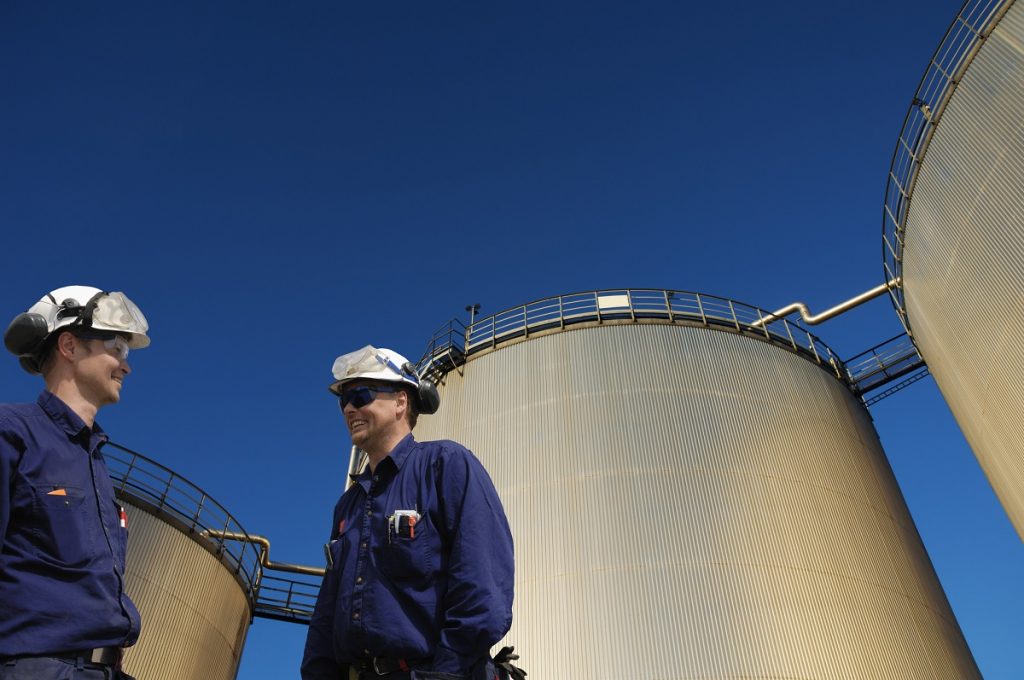Storage tanks contain liquids, both organic and non-organic, as well as vapors and compressed gases from different industries. Due to the nature of the substances these tanks hold, they are strictly designed after the American Petroleum Institute(API) 650 model.
Storage tanks also come in all shapes and sizes, with some more suited to holding in compressed gases than liquids. With so many industrial storage tanks to choose from, how can you tell which works best for your type of business?
Types of Storage Tanks
Storage tanks come in different shapes: cylindrical, horizontal, vertical, flat bottom, cone bottom, and an open top and closed top. Some of the larger tanks designed to contain huge volumes of liquid tend to be vertical and cylindrical in shape.
These tanks also need to have rounded corners to withstand hydraulic pressure from the hydrostatically induced pressure of the contained liquid.
Businesses that usually use storage tanks are:
- Companies that produce and refine petroleum
- Companies that deal with bulk storage and transfer operations
- Companies that manufacture petrochemical and chemical manufacturing
- Other companies that produce and consumes liquids and vapors
What storage tank you use will depend on its purpose and the substance you need to store. For liquids, you need to determine their flashpoint first before deciding on a storage tank.
In volatile materials, the flashpoint is the lowest temperature where vapors of the material will ignite. Determining this is important to avoid any accidents. Flammable liquids, like petroleum and other oils, need utmost care in handling and storing to prevent accidents as well as wasting a valuable resource.
-
Fixed roof tank
Fixed roof or floating roof tanks usually hold these liquid fuels. For liquids with very high flash-points, fixed roof tanks work best. These include umbrella roofs, cone roofs, and dome roofs. These tanks contain insulation that prevents clogging with heat provided by inner steam coils.
-
Floating roof tank
Floating roof tanks include external and internal floating roof types. For liquids with low flash-points, internal floating roof tanks work best. These tanks have cone roofs with a separate floating roof inside that moves perpendicular to the liquid level. It traps the vapors from fuels with low flashpoints.
External floating roof tanks are open at the top and keep liquids with medium flashpoints, like kerosene, diesel, naphtha, and crude oil.
Atmospheric storage tanks, like open top tanks, fixed roof tanks, cone roof, and dome roof tanks, all contain liquids at atmospheric pressure. These tanks hold liquids that won’t vaporize at ambient temperature.
-
Open top tank
An open top or open roof tank has no roof and can store or process liquids that are not volatile, like brine and water.
Tanks, like bullet and sphere tanks, are pressure storage tanks that can withstand pressure to keep the fluid inside in liquid form. These tanks contain high vapor pressure substances, like propane and butane.
-
Bullet tank

Compared with the other storage tank types, the bullet tank is one of the smallest. Bullet tanks are easy to transport and can be fabricated in a shop. Installation cost is also cheaper than most storage tanks.
-
Sphere tank
Sphere tanks contain higher volumes of high vapor pressure liquid. It can withstand greater pressures because of its plate thickness compared with cylindrical vessels.
Your storage tank depends on the kind of substance you handle. Industrial tanks come in different shapes and sizes and have a wide range of applications. For safety purposes, familiarize yourself with the different storage tanks, and consult with a dealer to ensure your business is using the right one.






